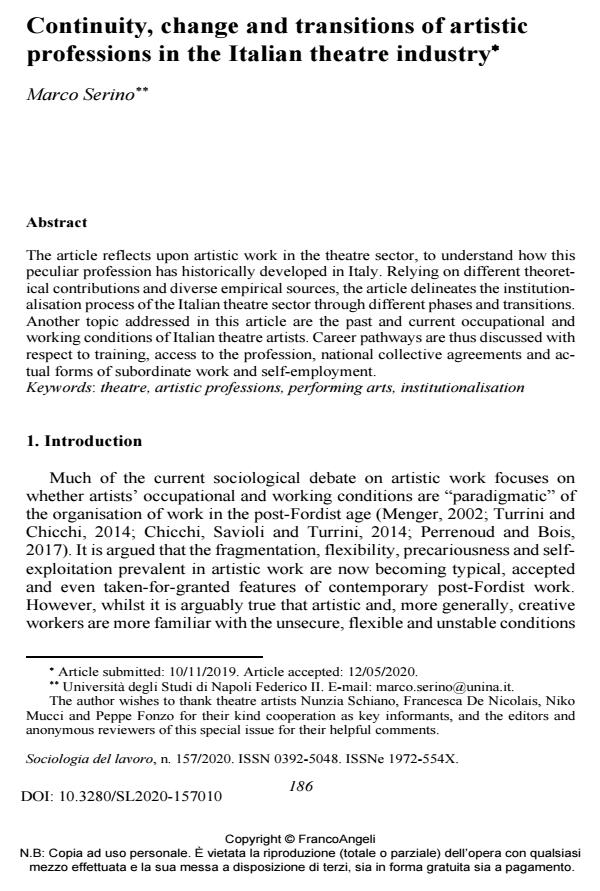Continuity, change and transitions of artistic professions in the Italian theatre industry
Journal title SOCIOLOGIA DEL LAVORO
Author/s Marco Serino
Publishing Year 2020 Issue 2020/157
Language English Pages 20 P. 186-205 File size 265 KB
DOI 10.3280/SL2020-157010
DOI is like a bar code for intellectual property: to have more infomation
click here
Below, you can see the article first page
If you want to buy this article in PDF format, you can do it, following the instructions to buy download credits

FrancoAngeli is member of Publishers International Linking Association, Inc (PILA), a not-for-profit association which run the CrossRef service enabling links to and from online scholarly content.
The article reflects upon artistic work in the theatre sector, to understand how this peculiar profession has historically developed in Italy. Relying on different theoret-ical contributions and diverse empirical sources, the article delineates the institu-tionalisation process of the Italian theatre sector through different phases and transitions. Another topic addressed in this article are the past and current occupa-tional and working conditions of Italian theatre artists. Career pathways are thus discussed with respect to training, access to the profession, national collective agreements and actual forms of subordinate work and self-employment.
Keywords: Theatre, artistic professions, performing arts, institutionalisation
- Stuck inside: Context, precarity and the effect of COVID-19 on Romanian performers Alina Maria Pavelea, Bogdana Neamțu, in European Journal of Cultural Studies /2024 pp.1249
DOI: 10.1177/13675494231216402 - Traces of solidarity: performing artists’ efforts against individualisation and isolation during Covid-19 pandemic Emanuela Naclerio, in Sciences & Actions Sociales /2022 pp.19
DOI: 10.3917/sas.018.0005 - Self-entrepreneurship in uncertain futures: The case of performing artists in Italy Emanuela Naclerio, in International Sociology /2023 pp.142
DOI: 10.1177/02685809221139111
Marco Serino, Continuity, change and transitions of artistic professions in the Italian theatre industry in "SOCIOLOGIA DEL LAVORO " 157/2020, pp 186-205, DOI: 10.3280/SL2020-157010